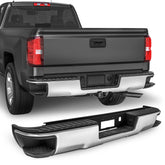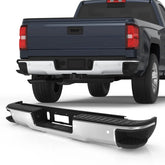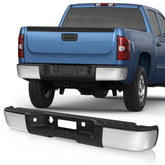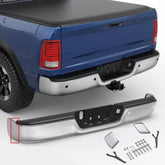What is a bumper for a car?
If you've ever owned or driven a car, you could probably give a basic explanation of what bumpers are and where they are located. But you may not know that a car's front and rear bumpers are more complex than they appear. To better understand how bumpers work and how to repair or replace them, read on.
What is a bumper?
Front and rear bumpers are protruding plastic or metal shells that surround energy-absorbing materials. They are designed to absorb impacts to the front and rear of vehicles and minimize damage from low-speed collisions. Today's standard passenger car bumpers have a rigid reinforcement bar under the outer skin, with sections of foam or compressible plastic underneath. You can replace a front bumper with MOSTPLUS if necessary.
The different types of bumpers
Although the law specifies bumper height and impact resistance, not all car bumpers are the same. Far from it! Here are the basic types:
- Standard bumper: Commonly used on passenger cars. It has no steps or hinges, just a color-matched plastic shell containing energy-absorbing mechanisms.
- Step bumper: Bumpers with a step-shaped cutout in the center, just below the license plate, are used on SUVs, trucks and some cars. These bumpers often have holes for ball hitch installation.
- Cowboy bumpers: These tall, sturdy bumpers are usually chrome-plated and are most often found on older trucks. They're made to stand out and pull heavy trailers.
- Tubular Bumpers: Typically found on Jeeps and high trucks, tubular bumpers have no plastic protection.

What is a bumper used for?
The purpose of a bumper on a car is very specific. Many people think it's there to prevent or reduce injuries in the event of an accident. But in fact, front or rear bumpers are not at all considered safety features to protect occupants. In fact, the purpose of bumpers is to prevent or reduce physical damage to the front and rear of vehicles in low-speed collisions.
Designers and manufacturers in the automotive industry are constantly searching for the ideal design and material solutions to balance stiffness and flexibility with hardness and strength. In general, the stronger and more robust the bumper design, the better it protects the vehicle structure.
However, it can also be dangerous to other vehicles and pedestrians. Bumpers sometimes break in high-speed crashes and fail to protect vehicle occupants in such situations. Most of the impact force is absorbed by the reinforced frame and control crush zones, while the bumper is only the first "barrier" to contact. However, this initial cushioning is designed to give the airbags time to deploy. Today, a car bumper is primarily used to provide protection in low-speed collisions. However, the shape and curvature of the car's front end and the design of the hood are primarily intended to minimize pedestrian injuries in the event of a collision.

How to repair a car bumper?
When it comes to limited damage, car bumper repair is not a particularly difficult procedure, and in many cases it is not necessary. The majority of a vehicle's bumpers are made of composite plastic, often painted the same color as the body, but there are several unpainted options and the traditional dark gray color. While parking or driving, this area of the vehicle often comes into contact with various objects. Damage can range from minor scratches to complex surface cracks and deformation. More serious problems should be left to the body shop to repair, especially if they involve body panels. In less serious cases, it is possible to do the repair yourself, with remarkable results. Basic repairs do not require special equipment and materials, but more difficult repairs require the intervention of a specialized and experienced service provider.

How to replace a bumper?
Although the chassis and frame of a car provide considerable strength, the body can be easily damaged. Your car's front bumper absorbs most of the impact in the event of a collision, saving you money in the body shop. However, as this component ages, it may begin to malfunction and require replacement. Even people with the most basic technical knowledge can perform this task, as it's one of the least difficult mechanical tasks you can perform on your car. You'll need a set of wrenches, a set of sockets and a ratchet, wire cutters, a Phillips screwdriver, and a flathead screwdriver. Unscrew the bumper cover, then remove the installation. Replace the bumper, then replace the cover. Just bolt everything securely in place and you're done.
Featured Products
- $329.99
$359.99- $329.99
- Unit price
- / per
- $329.99
$368.99- $329.99
- Unit price
- / per
- $294.99
- $294.99
- Unit price
- / per
- $279.99
- $279.99
- Unit price
- / per














